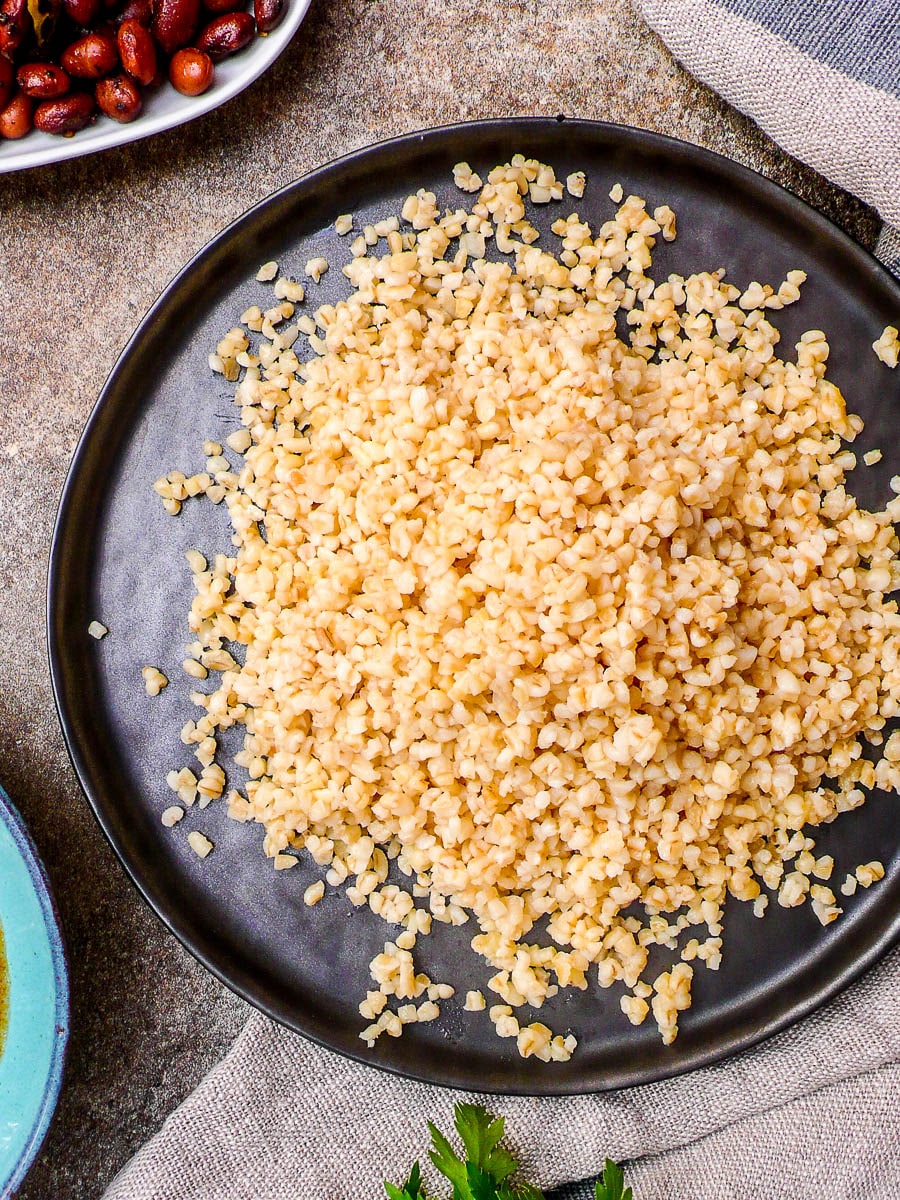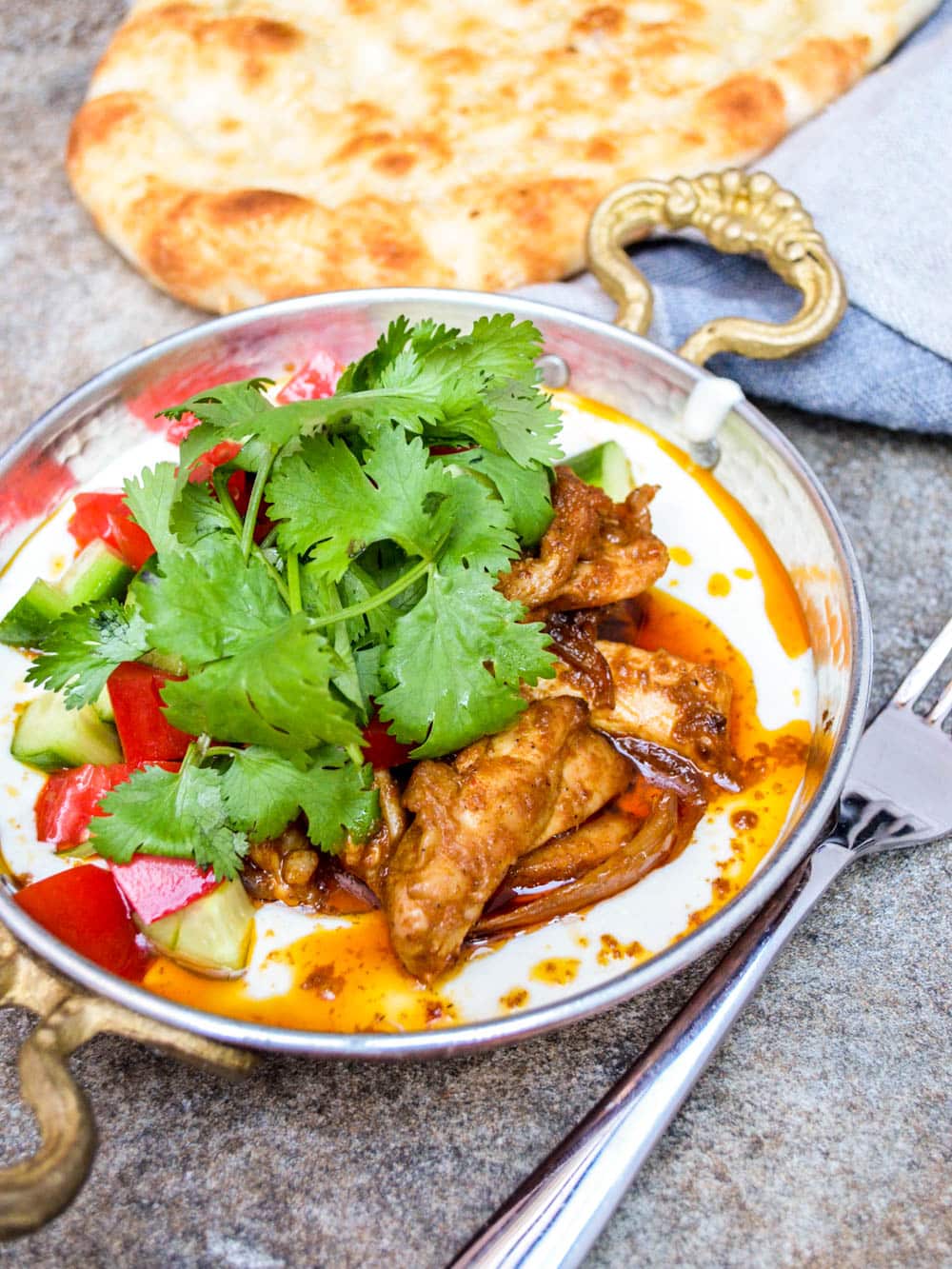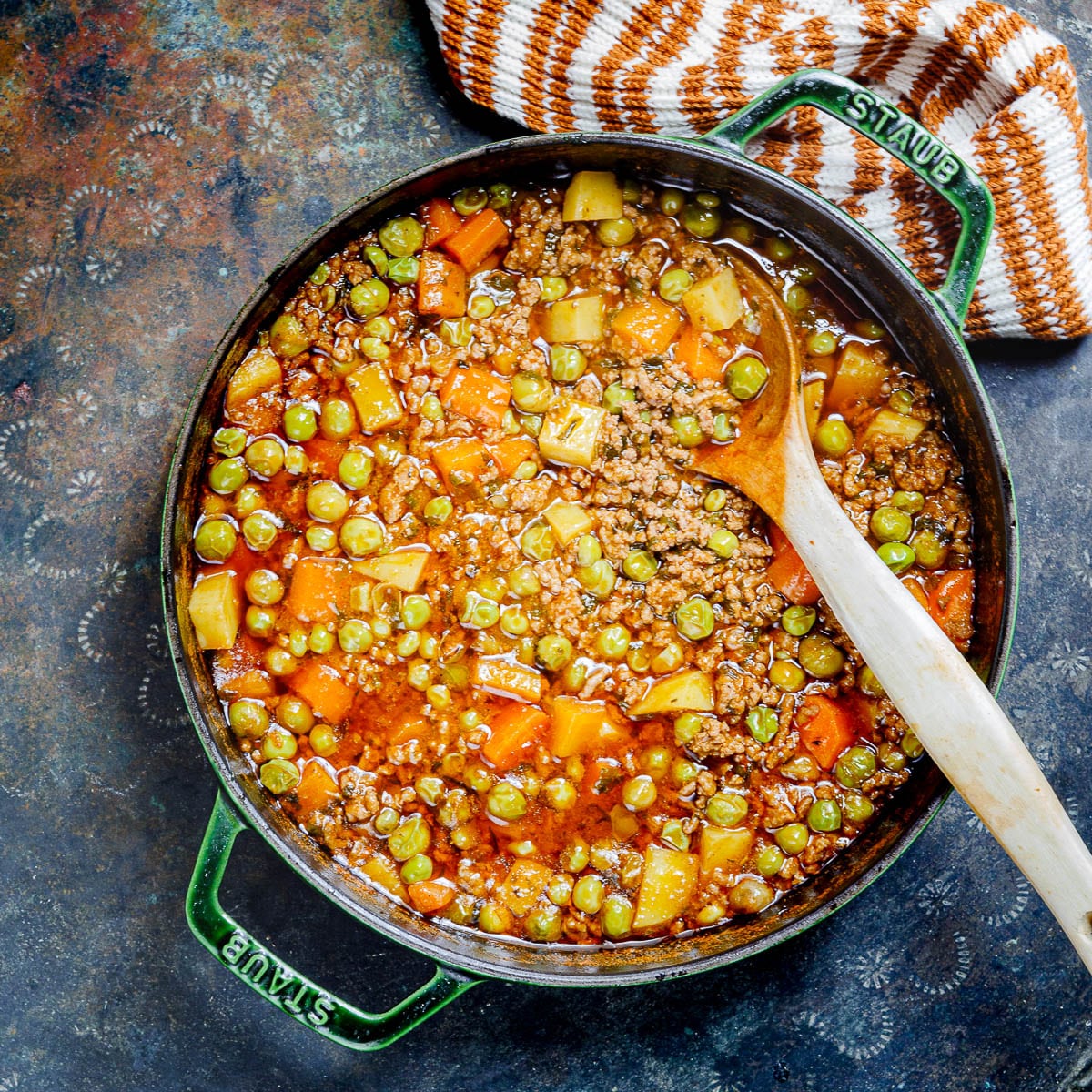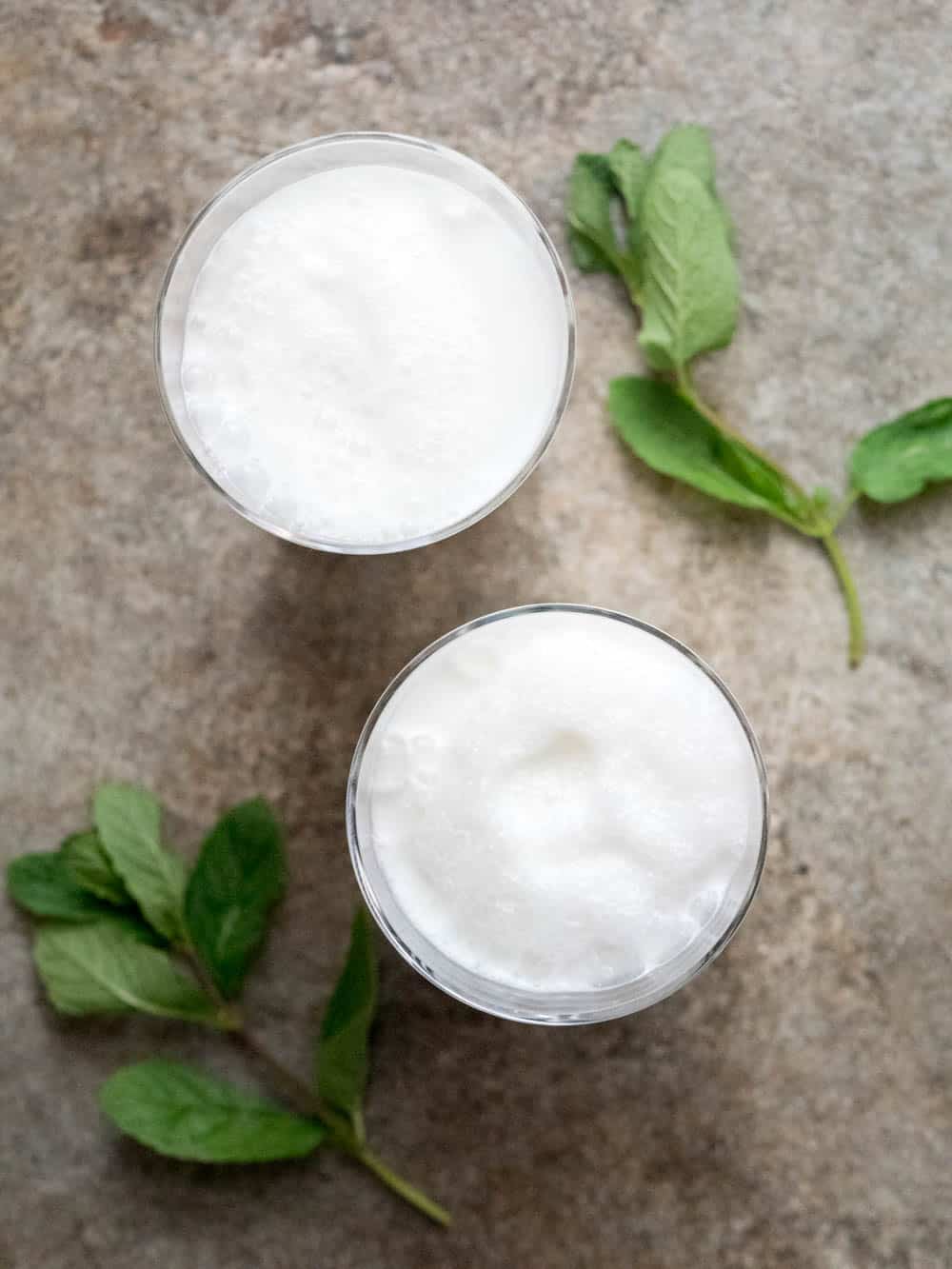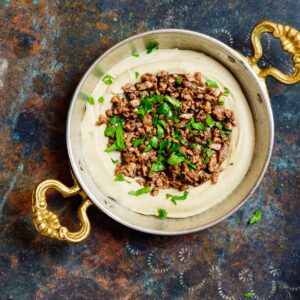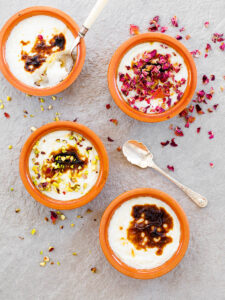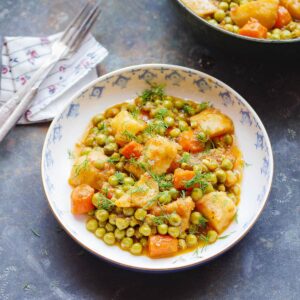Wholesome, hearty and flavourful. What’s not to like about bulgur? This staple food is popular throughout Anatolia and the Middle East for good reason.
A lot of people think people in Turkey or the Middle East eat rice with every meal, but in fact, in many parts of the region, bulgur remains more widely used. Made from wheat, this is perhaps only natural in the birthplace of agriculture, where wheat was one of the first and most important crops.
For a long time, rice was a luxury good. As such, most people would be eating bulgur or bread with their dinner. As rice became more affordable, it became the side dish of choice for many in this region as well.
However, bulgur is still widely used and very popular. In certain parts, such as Anatolia, rice never took over.
What is bulgur wheat?
Bulgur is boiled and dried wheat grains which are then cracked into different sizes. It’s a wholesome food which should not contain any additives. Only the bran is removed from the wheat grain, although you can also find wholegrain bulgur, which retains a higher fibre content.
Bulgur is a great and more flavourful alternative to rice, and goes particularly well alongside meat or legumes. It’s commonly used as a side dish to a main meal, but is also used in salads, for stuffing vegetables or even added to meat or vegetable meatballs.
What are the different types of bulgur?
There are two main variables when it comes to choosing the bulgur. The first is the type of wheat used, the second is the size of the grains.
The colour
The most widely available bulgur is yellow in colour and is usually made from durum wheat. This has a mildly nutty flavour that is great for all-round use.
In some places, you can also find darker types of bulgur. These are usually made from different types of wheat, and often have a more distinctly nutty flavour. My favourite is spelt bulgur, which in addition to tasting great, also has additional nutritional benefits compared to regular yellow bulgur.
You can also find wholegrain bulgur, which leaves the bran intact. This enhances the nutritional content of the bulgur, not least in terms of fibre, but the flavour becomes less delicate. For that reason, I prefer not to use wholegrain bulgur.
The size
Bulgur is cracked into a range of sizes, but in commercial production, two are most common.
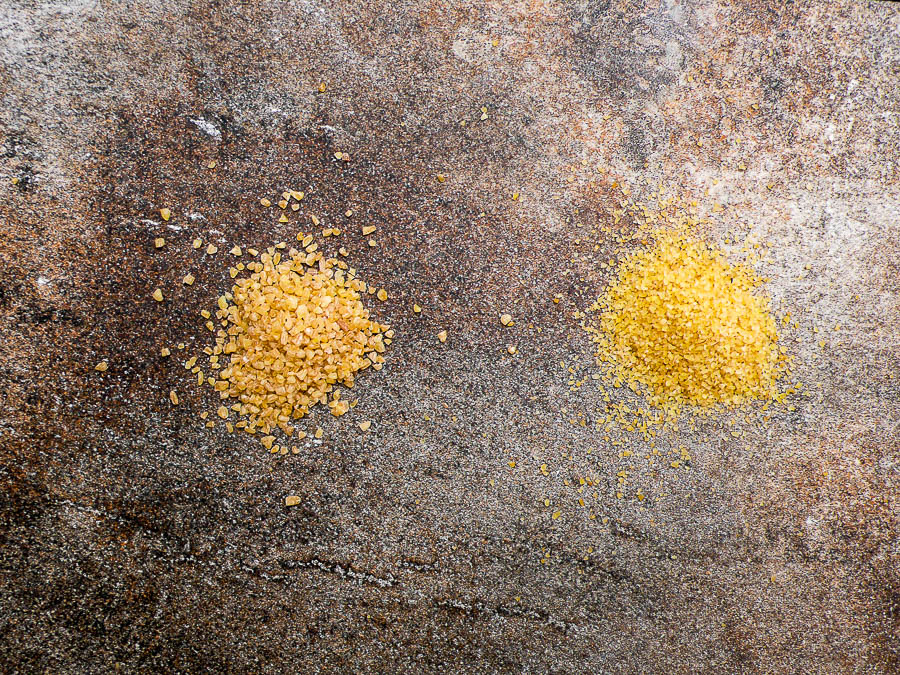
The larger ones, often sold as pilavlik by Turkish brands. This is used mostly as you would use rice, either as a side dish or to e.g. stuff vegetables with. This bulgur needs to be cooked prior to consumption.
The smaller ones are tiny almost sand-like grains, often sold as köftelik by Turkish brands. These are most famously used in the Levantine meze salad tabbouleh, but are also popular in vegetarian (or meaty) patties. This type of bulgur is usually soaked in hot water rather than cooked or, in the case of tabbouleh, added dry in small amounts for a little crunch.
A few tips for cooking bulgur wheat
Bulgur is very easy to cook. Indeed, you can cook it in the same way you do rice, though the water ratio may differ slightly.
You can cook it simply with water and salt, though I prefer to add a little extra flavour when cooking bulgur. This can be by using a homemade stock instead of water, or by adding whole spices such as allspice and bay leaves to the cooking process. Butter and olive oil helps add even more flavour, but is not necessary to keep the bulgur from clumping.
For Turkish bulgur, it’s common to fry small pieces of vermicelli or orzo pasta and add to the bulgur, just as you do Turkish rice. This makes for a more interesting texture and visual appeal. Turks call this bulgur pilavı. I recommend trying it!
Does bulgur wheat need soaking?
Bulgur is parboiled and doesn’t need to be soaked prior to cooking. I do, however, like to give it a rinse before cooking to remove any dust left from the packaging and transportation. This is more important if you buy bulgur loose weight than if you buy a packaged product from a reputable producer.
How long to cook bulgur for – and how to know when it’s ready
The cooking time for bulgur depends on the size of the bulgur grains, but since it’s precooked, it doesn’t need long.
Coarse bulgur wheat usually cooks in about 10 minutes, though different brands may vary slightly. You’ll know it’s ready when it’s softened throughout without any hard resistance in the centre.
Note that bulgur will usually not become as soft as rice. Unlike rice, bulgur doesn’t need to rest for a prolonged period after cooking. The grains will easily remain separate after cooking.
Fine bulgur wheat doesn’t need cooking, only soaking in hot water. As mentioned above, in some cases it can also be used as-is without cooking in very small amounts.
A few bulgur wheat recipes
Now you’ve got your bulgur cooked, what do you do with it?
Coarse bulgur cooked according to the recipe below is a great side dish to any meat or legume based dish. It’s particularly great with stews like this spiced lamb stew or meatballs. I also like using leftover bulgur in a wholesome salad.
Fine bulgur is brilliant for making tabbouleh or these vegan Turkish lentil meatballs. Or why not try your hand at kısır, the more wholesome Turkish version of tabbouleh?
The recipe below makes 4 generous portions of coarse bulgur as a side dish.
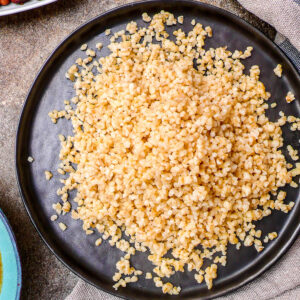
How to cook bulgur wheat
Ingredients
- 4 Tbsp butter
- 2 Tbsp olive oil
- 1 bay leaf, optional
- 10 whole whole allspice, optional
- 250 g bulgur (coarse), for other types, see recipe notes below
- 500 ml water, or light stock
- salt
How I make it
- Melt 3 Tbsp of the butter along with the olive oil in a thick bottomed pot over medium heat. Add the bay leaf and whole allspice and fry for a minute. The spices will give an extra depth of flavour to the bulgur, but can be omitted for a more plain version.
- Add the bulgur. Stir well until completely coated by the fats. Add the water and season well with salt. Bring to a boil, reduce the heat to low and put a lid on. Leave for 10 minutes.
- After 10 minutes, take off the heat and leave for another five minutes. Don’t worry if there’s still a little water left in the pot when you take it off the heat, this will be absorbed during the resting time. Once the bulgur has been off the heat for 5 minutes, remove the bay leaf and allspice. Add the remaining 1 Tbsp butter and mix well. Season to taste with salt and pepper and serve immediately.


